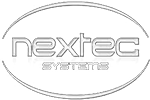This article is an overview for some of the common terminology associated with Lighting Control Systems:
Accent Lighting: This is directional lighting designed to draw attention to certain architectural features or emphasize an object. Typically accent lighting should be 3 times the ambient light level.
Ambient Lighting: This is general illumination that uniform in a room or area and has no specific source.
Astronomical Timeclock: This is a regional clock that is programmed into a a system to provide automatic control of lighting for each day of the year. It usually considers the sunrise and sunset for your geographic region.
Ballast: This is an electrical device used in florescent and HID lighting fixtures that provide the correct voltage, current and waveform for powering up and operating the lamp.
Cans: This is a term that is commonly used by trades people to refer to recessed in ceiling lighting.
Circuit: Refers to a closed loop in a buildings electrical system. For example if you had 10 ceiling can lights controlled by a dimmer protected by a 20 amp circuit breaker that would be considered a circuit.
Compact Fluorescent Lamp (CFL): This is a bulb designed for high energy efficiency and can be dimmed using a matching ballast and dimmer.
Dimmer: An electronic device that is used to control the intensity of light output from a light or group of lights. Dimming capabilities are commonly used in preset or custom lighting scenes.
Electronic Low-voltage (ELV): This is a type of lighting that utilizes an electronic transformer to step down the line voltage (usually 110v) to lower voltage used by certain devices (usually 12v). Some types of Electronic Low Voltage is dimmable and some are not.
Electronic Switch: This is an electrical device that uses an internal semiconductor to turn a light or outlet on or off. Nextec uses communicating electronic switches to incorporate these devices into lighting control systems.
Fade Time: This refers to the time it takes a dimmer to change the change lighting between different levels. Nextec can customize the fade times of lighting in our lighting control systems.
Ganging: This refers to mounting of lighting controls such as dimmers and switches side by side in an electrical box.
GFCI (Ground Fault Circuit Interrupter): This is a electrical device designed to provide protection from potentially dangerous ground fault currents.
Incandescent Light: This is an electric light that works an electric current is used to heat a metal filament. These are being phased out in favor more energy efficient lighting.
Infrared Control: This refers to controlling a lighting keypad or other device through an infrared signal from a device such as a remote control. Nextec Systems offers control of lighting systems through infrared and RF (Radio frequency) Control.
LED lighting: This is a type of lighting that uses arrays of Light Emitting Diodes (LED) to create a low wattage, low temperature lighting source. LED lighting units also offer a longer lifespan than older technology such as incandescent lighting.
Lighting Scene: This refers to the ability of several lights and their characteristics such as dimming level and fade time to be controlled by a single command such as a button press.
Line Voltage: This refers to the standard 120 volts of power provided by receptacles and lighting fixtures.
Low Voltage Lighting: This refers to lighting where line voltage (120v) is stepped down to lower voltages, usually 6, 12, or 24 volts. Low voltage lighting may use either electronic or magnetic transformers.
Multi-Location Dimming: This refers to the ability to allow dimming from all locations in multi gang circuits, as opposed to a single dimmer controlling the lights on a circuit.
National Electrical Code: This is the regionally adopted written standards for the safe installation of electrical wiring and equipment in the United States. It is published by the National Fire Protection Association (NFPA), and while it is not US law it is usually mandated by state and local law.
Preset Lighting: Similar to lighting scene, this refers to the ability of a lighting control system to control the characteristics of several lights and their characteristics such as dimming levels and fade times from a single command such as a button press.
UL Listed: This refers to products that are certified by the Underwriters Laboratories, which is a nationally recognized company for product safety testing. It is also referenced in the National Electrical Code for required electrical devices.
Vacancy Sensor: Also known as an Occupancy sensor this is essentially a motion detector that provides the automatically switching on/off of lighting depending on if people are in the monitored area. Vacancy / Occupancy sensors are utilized for both convenience and energy savings.
Check out our Residential Lighting Control Services and Commercial Lighting Control Services.
